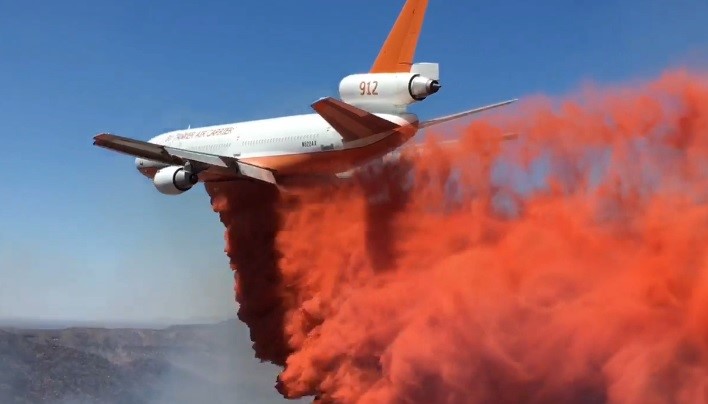Susannah Frame with KING 5 News, Seattle’s NBC affiliate, interviewed FSEEE Executive Director Andy Stahl for an in-depth feature on aerial fire retardant. Frame also spoke with Vertis Campbell of the Colville Tribe and Brandon Miller, CEO of GreenFire, which produces a nontoxic fire retardant.
Campbell described the devastation caused by two separate retardant drops that killed thousands of steelhead in Omak Creek, just feet from his home on the Colville Reservation: “It’s heartbreaking…. That’s our heritage.”
A timber mill constructed in the 1920s had decimated fish populations on the reservation, and in the early ’90s, the Confederated Tribes of the Colville Reservation began restoration efforts to rehabilitate historic steelhead and salmon spawning grounds on the creek.
The retardant dumps proved to be a major setback for the Colville Tribes’ efforts. As Frame reported, the U.S. Fish and Wildlife Service stated that the mistakes by the Forest Service brought “catastrophic environmental harm” to Omak Creek.
“The U.S. Forest Service invented fire retardant in the 1950s,” Frame reported. “For 70 years, the Forest Service didn’t track or report how much retardant was mistakenly getting dropped into waterways.”
An FSEEE lawsuit forced the agency to start keeping records, and last year, the Forest Service reported the numbers publicly for the first time. We now know that, from 2012 to 2019, the Forest Service dropped retardant into or near water 459 times — a total of 760,000 gallons. (And retardant usage has increased since 2019.)
“I was blown away that the Forest Service’s error rate was so high,” Andy told Frame. “Here we’ve got the agency charged with protecting that water actually being the biggest polluter of that water.”
Frame noted that, for years, the Forest Service argued that it didn’t need a permit under the Clean Water Act, based on its policy of keeping retardant drops at least 300 feet away from rivers and lakes (a policy FSEEE forced the Forest Service to adopt).
As Frame reported, a federal judge recently “sided with the FSEEE, ruling the Forest Service is violating the Clean Water Act and the agency does need to obtain a permit.”
Frame also reported that Forest Service representatives met with GreenFire executives to discuss the company’s nontoxic alternatives to the currently used formulation but, “There was no follow-up from the agency.”
GreenFire CEO Brandon Miller told Frame that their products were “pretty much dismissed from the beginning…. We know we have a product that does not harm the environment. Water is so precious. We hear about it constantly on the West Coast. So you’d think you’d take every measure to protect that for the future.”


